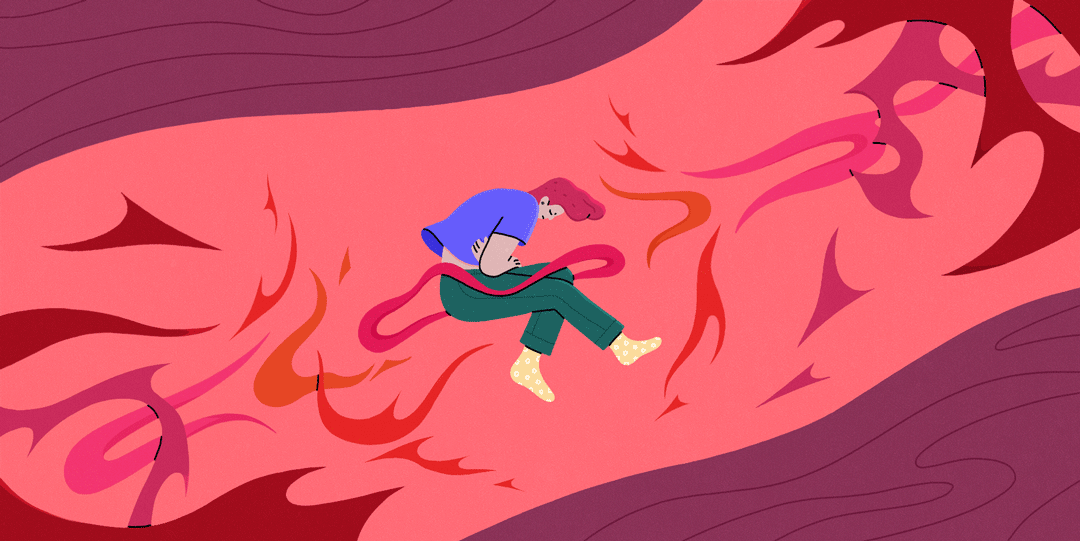
What Is Endometriosis?
Share
 In the United States alone, ten to twenty percent of people who menstruate experience issues with endometriosis. This percentage means that endometriosis is relatively common and that many people deal with the painful symptoms that pair with it. Everything from irregular periods to struggling with infertility, endometriosis can wreak havoc upon the body in ways people typically suffer through in silence.
In the United States alone, ten to twenty percent of people who menstruate experience issues with endometriosis. This percentage means that endometriosis is relatively common and that many people deal with the painful symptoms that pair with it. Everything from irregular periods to struggling with infertility, endometriosis can wreak havoc upon the body in ways people typically suffer through in silence.
Endometriosis is essentially a disorder that takes the tissue your uterus develops naturally inside and causes it to grow outside of the uterus. This side effect can cause issues with your ovaries, fallopian tubes, and even other organs if the tissue growth gets out of hand. Because the tissue is growing outside of the uterus, it cannot strip and exit the way it would usually during your period, so it gets stuck. This can cause cysts and tough, painful scar tissue that can make things even more difficult during that time of the month.
It can be overwhelming to start experiencing these problems when you aren’t quite sure what to do. Below is an outline of significant causes and symptoms to help determine when to talk to your doctor.
Causes
Endometriosis is one of those conditions that hasn’t been thoroughly explored by medical professionals. It can be challenging to diagnose, and thus, the causes can be hard to pinpoint. Some of the more common explanations are all based on the transfer and transformation of endometrial cells.
Different hormones in the body, or even immune issues, can cause other healthy cells to transform into endometrial cells. It can also be caused by immune disorders when the body fails to identify dangerous cells and destroys them.
A rare situation is retrograde menstruation, which causes blood and tissue back up instead of expelling it out of the body. This causes endometrial cells to stick and grow instead of expelling with uterine waste like they are supposed to. While these aren’t particularly common, they can be underlying causes of endometriosis. Further medical research is needed to help understand the phenomenon.
Symptoms
Unfortunately, endometriosis is a disorder that comes with quite a bit of pain. One of the most common symptoms that individuals notice is heavy and painful periods. The cramping can start before you’ve begun to bleed and is common in areas like the abs, pelvis, or lower back. Bleeding may also be irregular and happen even when you’re not actively menstruating. The irregularity in your cycle can cause longer or shorter periods that are difficult to track as they vary in length and consistency. You may also experience some excessive bloating and nausea that can be difficult to soothe.
You may even find that you have pain during or after intercourse or while going to the bathroom in more severe cases. Because everything is connected down there, endometriosis can cause problems for all areas with little relief. Severe pelvic pains can be jarring, so if you’re experiencing anything close to these symptoms, you should consult your doctor.
Because it is challenging to treat endometriosis, you may not receive any immediate relief, but your doctor can help you develop a plan to make symptoms more manageable. If left untreated, endometriosis can be far worse than just pain and irregular periods. Endometriosis can cause infertility and even develop into cancer if it gets out of hand.
What Should You Do?
As soon as you start noticing symptoms, it would be best if you spoke with a professional. Doctors can diagnose you, help manage your symptoms, and suggest a plan to keep your endometriosis in check.
Your diagnosis is not the end of the world. It may take a little bit of time and a few tries to figure out what exactly will work for your body, but with a little bit of diligence and a doctor that is on your side, you’ll be able to manage just fine.

